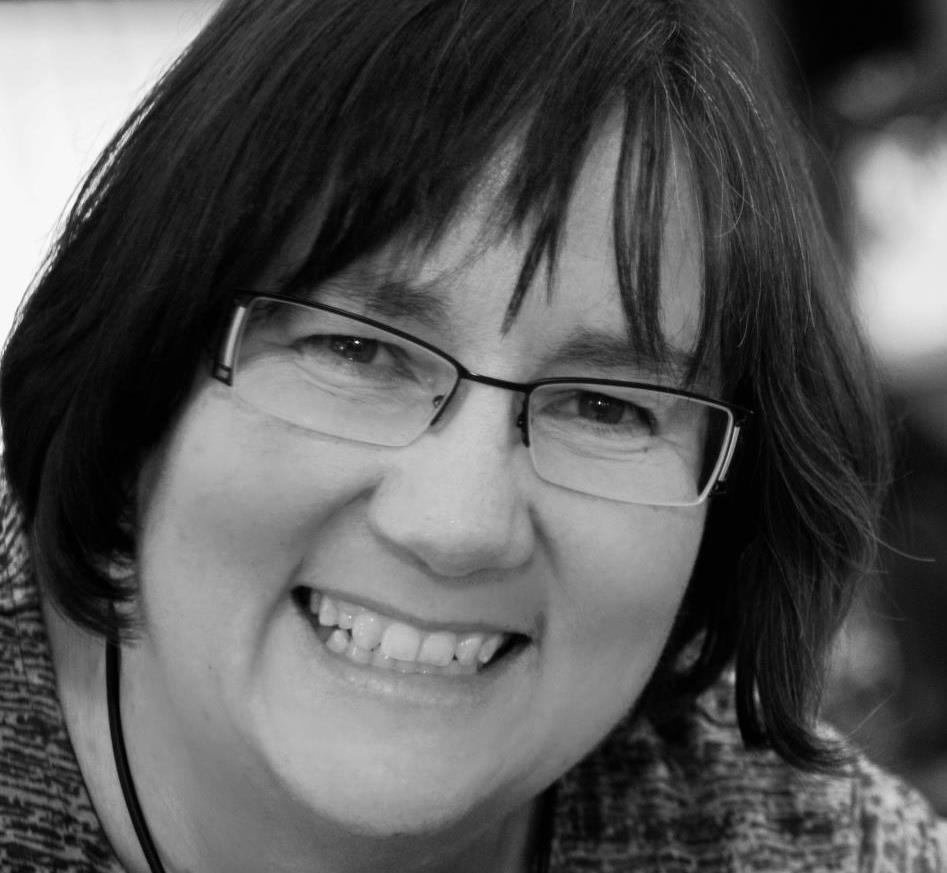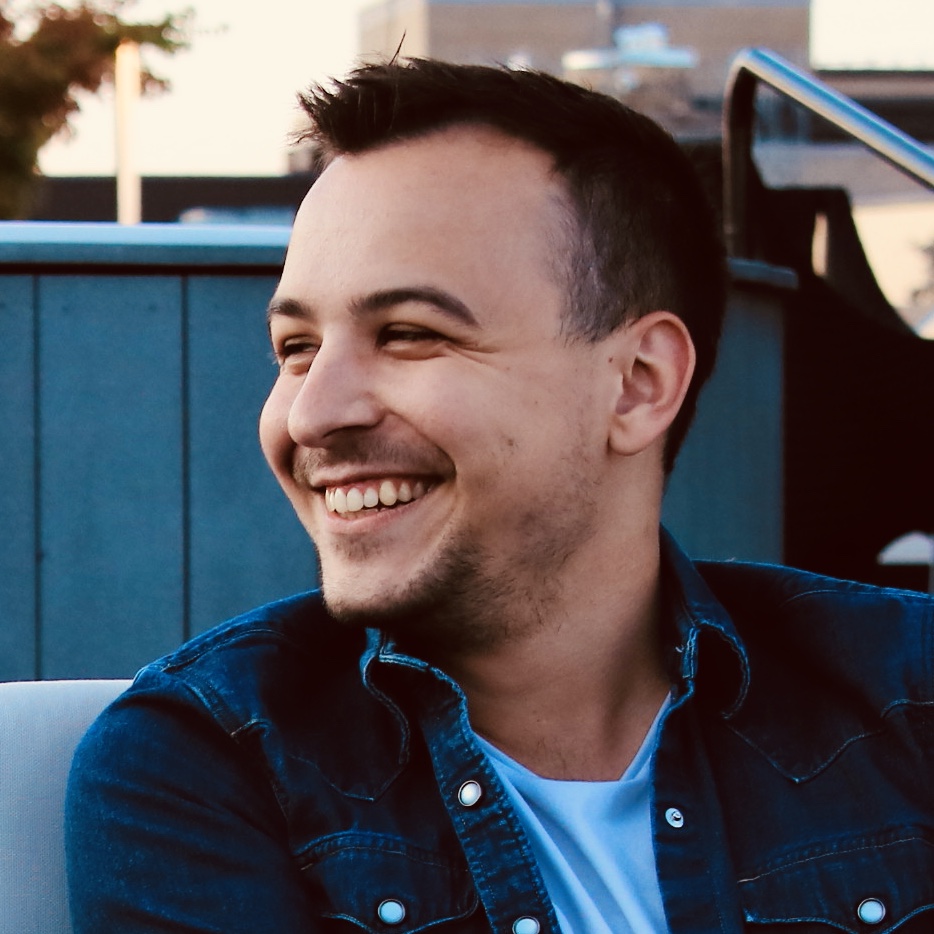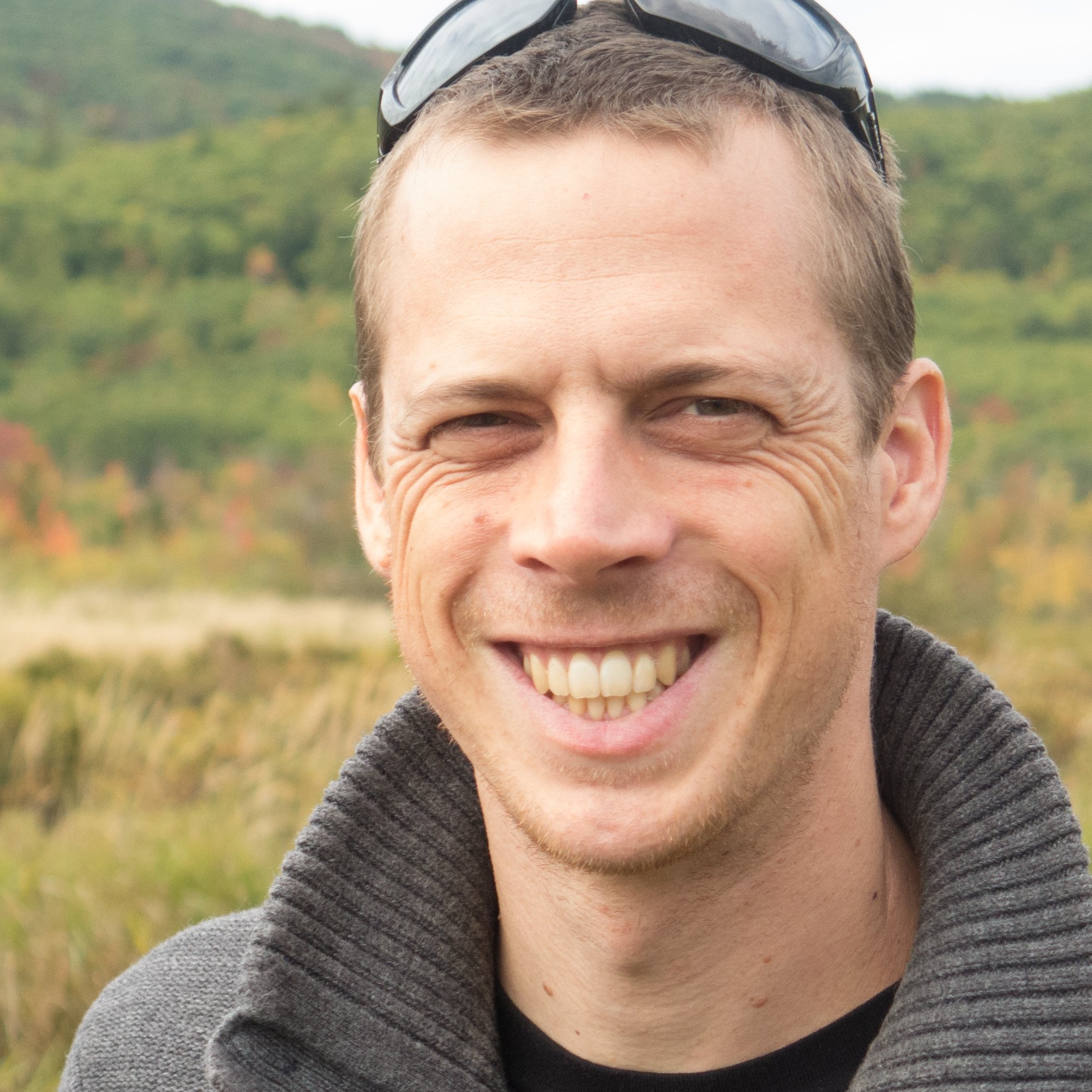Keynote Speakers
Everything You Always Wanted to Know About Security Training, But Were Afraid to Ask
As more and more people become concerned about protecting their digital privacy and security, it often falls on engineers to explain best practices to their friends, family, and communities. Even if we're not being actively solicited for advice, some of us would like to go out into our communities and give them the benefit of our experience in digital security. This talk will cover the many potential pitfalls of doing this kind of training, give some hard-won advice on how to do things right, and introduce the audience to the resources they need in order to become good trainers, including the Security Education Companion.
Eva Galperin is EFF's Director of Cybersecurity. Prior to 2007, when she came to work for EFF, Eva worked in security and IT in Silicon Valley and earned degrees in Political Science and International Relations from SFSU. Her work is primarily focused on providing privacy and security for vulnerable populations around the world. To that end, she has applied the combination of her political science and technical background to everything from organizing EFF's Tor Relay Challenge, to writing privacy and security training materials (including Surveillance Self Defense, the Digital First Aid Kit, the Security Education Companion), and publishing research on malware in Syria, Vietnam, Kazakhstan. She has presented her work at the Chaos Computer Congress, Black Hat, and USENIX Security and in 2017, VICE Motherboard named her Human of the Year. When she is not collecting new and exotic malware, she practices aerial circus arts and learning new languages.
Rust's Development Process
Rust is known for the language, that is, what the language does. But languages are more than just the language; they're also all of the stuff *around* the language: building the compiler, writing documentation, tons of things. Rust is not only an interesting language, but is doing very interesting, though less well-known, work around how a large software project is actually developed. In this talk, Steve will talk less about Rust, and more about building Rust, one of the largest programs written in Rust.
Rust Core team, former Rails Core team, extremely active in open source.
Dealing with Data: the Nosedive Challenge
Social media permits us to rate and rank each other with 'likes' and much time is spent polishing and preening images and reputations. Some fear a future where such sorting systems dominate our lives but in the popular imagination, the interpersonal aspects matter most. However, it's no accident that social media prompts us to provide more and more details about our daily lives. Whatever they say, social media is greedily surveillant. Most platforms are 'data-driven' only in the sense that data fuels them, not that data have a life of their own, independent of those who prospect for, mine and analyze them. So what are the priorities for developing appropriate, sustainable and fair social media platforms?
About thirty years ago I started to realize the the so-called 'microelectronics revolution' was likely to have profound effects on society, especially as personal data would become much more malleable, store-able and retrievable. That launched me into researching surveillance as a mushrooming feature of today's world. I'm neither a paranoid nor a Pollyanna but I do believe some urgent thought and action is needed on everyday online interactions and data justice.
Deployment of Quantum Cryptography
The history of cryptography is a history of failures. Stronger ciphers replaced broken ones, to be in turn broken again. Quantum cryptography offers a hope to end this replacement cycle, for its security premises on the laws of physics and not on limitations of human ingenuity and computing. I will tell about ongoing deployment of quantum cryptography networks using fiber-optic and satellite links, and efforts to certify their implementation as secure.
Dr. Vadim Makarov works with quantum cryptography. He heads the Quantum hacking lab http://www.vad1.com/lab/ at the University of Waterloo, where he and his students try to break implementations of quantum cryptography despite all the claims that it is unbreakable :).

Lori Olson
Software: Profession, Craft or Passion?
Not everyone has the same understanding of just what a software engineering (or software development if you prefer) career is all about. Is it a profession? Is it a craft? Or is it your life's passion? Why not all three?
Lori is a Ruby enthusiast of many years. Whether developing web applications with Rails (welltriever.com, kudosnow.com, scrippslifestylenetwork.com) or iOS apps with RubyMotion (WIMBY, coredatainmotion.com), she maintains that Ruby is the most productive, flexible, and fun-to-work-with tool for most software development needs.
With her well received Ruby on Rails for Real workshops, (ror4real.com/rails4ios.com) Lori has helped development teams from Calgary to Edinburgh and all the way to Melbourne Australia ramp up on Rails to deliver better quality products, faster.
As a card-carrying member of DevChix, teacher at RailsBridge, and a mentor, instructor and now chapter lead for Ladies Learning Code, Lori is helping to make a career in software development a more welcoming opportunity for all women.

Karen Sandler
Cyborgs Unite!
When Karen discovered at a young age that she had a life threatening heart condition, the last thing she expected was to have to worry about software. Now, with a heart device implanted in her body, she has come to understand not only how vulnerable medical devices are but how we are making critical choices about software that will have huge societal impact. Karen will also touch on potential avenues for accountability, transparency, and access to remedies as we hurtle towards an Internet of Things built on proprietary source code that prevents us from knowing exactly how these vital devices work, what data they are collecting and to what ends, what their vulnerabilities might be, and the extent to which their closed, proprietary nature keeps us from developing societal mechanisms and review processes to keep us safe.
Karen M. Sandler is the executive director of the Software Freedom Conservancy, which is the nonprofit home of 46 projects, including Git, Etherpad, QEMU, Selenium and Inkscape (to name a few). Karen is known as a cyborg lawyer for her advocacy for free software, particularly in relation to the software on medical devices. Prior to joining Conservancy, she was executive director of the GNOME Foundation. Before that, she was general counsel of the Software Freedom Law Center. Karen co-organizes Outreachy, the award-winning outreach program for women globally and for people of color who are underrepresented in US tech. She is also pro bono counsel to the FSF and GNOME. Karen is a recipient of the O’Reilly Open Source Award and cohost of the oggcast Free as in Freedom.
Invited Speakers
The Stoic Geek: Finding Your Way as a New Developer
Landing your first job in a new, high-tech profession isn’t easy for anyone, let alone for students who have yet to gain a lot of practical experience. Here I will share the tricks and philosophies I’ve learned as a self-taught developer that help me to overcome the persistence of “impostor syndrome”, to navigate a quickly-changing field, and to work happily with my colleagues.
Jacob Cook is a developer, Python/JS enthusiast and tech rabble-rouser based in Montréal. His fields of interest include staying on the cutting-edge of Web development practices, building software to help user privacy and exploring technology allowing for the decentralization of the Internet. He is the author of several Python libraries as well as the lead developer behind the arkOS self-hosted server project, which was featured in VentureBeat, Fast Company, Der Spiegel and many other tech media sites. Jacob currently works as a software developer and project manager for Savoir-faire Linux, a consulting firm that brings the power of open source technologies like Python and Django to the world of enterprise and government software applications.
Language as a Tool
Creating a piece of software is hard. Yet functioning software is so incredibly valuable, even major errors can be overlooked and worked around. Programming languages are currently the best tools we have to create software, so creating a better language can have outsized benefits. This talk will look at some features a better language would have and discuss how those improve the act of creating software.
I've been a professional programmer for close to 30 years working on software from Assembly up through telecom infrastructure across a range of industries using a variety of languages. I'm currently a fan of Clojure and I'm creating a new language inspired by Clojure that compiles to native executables.
Medical Applications of Deep Learning
Using deep neural networks to discern patterns in both structured and unstructured data is becoming increasingly popular and powerful. It has commonly been applied to image processing and recommender systems, for example, but can it also be useful in medicine? This talk will explore the fields of brain imaging, both structural and functional, and the impact AI is having on them. Furthermore, it will explore how machine learning can use patient data to predict successful treatments for depression.
Robert Fratila is a Co-Founder and CTO at aifred health. He is very passionate about combining medicine and AI throughout his work and research. His work as a software developer at the Montreal Neurological Institute, integrating state-of-the-art machine learning models in health care, specifically brain imaging, has given him lots of experience in finding efficient solutions to complex problems. In his spare time, he has worked on several projects including a search engine, a brain-state classifier, full computer vision packages for autonomous underwater vehicles and a program that creates a predictive model for future patients diagnosed with Leukemia, just to name a few.
He has dedicated much of his time to giving workshops and talks about his work to student groups at McGill including the Neuroscience Undergraduates of McGill (NUM) and McGill Women in Computer Science (McWiCS). He is committed to spreading knowledge and demystifying the wonderful field of machine learning.

Mike Hoye
Accessible Code And Accessible Communities
Over the last five years we've put a lot of work into making our Mozilla more accessible and participatory, not just in the product but in our codebase, documentation and community. I'd like to share what we've learned from that, and what you can do to help your project and the community around it grow.
Mike Hoye is the Engineering Community Manager at Mozilla, as well as a former sysadmin and entrepreneur. He'll be talking about what Mozilla's learned about openness and inclusivity as an engineering practice over the past five years, and what any open source project can do to give their community the same care and attention they give their products.
Writing NES Games With Assembly
I’d like to take you on a stroll down memory lane and dig into the internals of the Nintendo Entertainment System (NES) to figure out how it works. While we’re there, we’ll see how to build a simple game for the NES using 6502 assembly with the help of a few modern tools. We’ll gain a new respect for ’80s developers and an appreciation for the high-level languages we have today!
Christian is a self-taught software developer working on APIs at GitHub. At a young age, he discovered Visual Basic 6 on his home computer and immediately fell in love with programming. When he is not reading about technology and programming, you may find him rock climbing, cooking or drinking a stout.
Teaching Machines to Learn
Machine learning is one of the hottest topics in the tech industry in the last few years. However, despite some resounding successes, many roadblocks remain. I will discuss what is needed to go beyond very specialized systems, as well as give an overview of what doing research in machine learning looks like. In particular, since this domain is at the intersection of many other areas of science, there exist multiple viable directions for each problem.
Nicolas Le Roux got an MSc in Applied Maths from Ecole Centrale Paris and an MSc in Maths, Learning and Vision from ENS Cachan. He got his PhD in 2008 from University of Montreal where he worked with Yoshua Bengio on neural networks in general and their optimisation in particular. He then moved to Microsoft Research Cambridge to work on generative models of images with John Winn. In 2010, he joined Inria in Francis Bach's team to work on large-scale convex optimisation. From 2012 to 2017, he created and managed the research team at Criteo in Paris. He joined Google Brain Montreal in 2017 where he now works on large-scale optimization and reinforcement learning.

Kim Moir
From Hello World to Goodbye Code
At some point, the code you write today will be deleted and replaced with something new. This talk will discuss the life cycle of a large code base, and how to manage it over time to accommodate rewrites, giving examples from a major rewrite of the Firefox build and release pipeline over the last two years. You'll learn how to replace components of a running distributed system while keeping it operational, the proverbial replacing the wing of an airplane in flight. Beyoncé lyrics and cat pictures will also be featured.
Kim Moir works at Mozilla as a Staff Release Engineer. Kim’s interests lie in optimizing large distributed systems, specifically debugging and optimizing high volume continuous integration farms. Her favourite thing to do is to replace an existing system with a new one until the legacy system is a tiny shell of its former self and it can be deleted, with no downtime. Kim has spoken at conferences and written extensively about open source and release engineering at scale on her blog https://kimmoir.blog. She is an advocate for more inclusive and diverse culture within the industry, and practices for more effective teams.
Outside of work, Kim is a long distance runner, which dovetails nicely with her other hobby of baking cakes and making ice cream. She has an amazing husband and son.
How Errors In Your Data Are Detected (and Fixed!)
Whether it’s noise in a channel or scratches on a CD surface, errors in the movement and transmission of data are bound to occur. The message “I like rice!” could turn into “I like mice!”, or "1101" could turn into "1100". This behaviour can have many consequences, ranging from the bad (software will not work or run) to the very bad (software will do the *wrong* thing). This is where error correcting codes come in! They are used everywhere in communication technology—from CDs and iPods to RAM and deep space satellites. In this talk, I’ll discuss some of the challenges and mathematical techniques used in detecting and correcting errors in transmitted data.
Arshia is a fourth year computer science student at the University of Waterloo, a StarCon organizer, and an avid reader.
Resilient to Failure
When browsing your favourite website, ordering something online or messaging your friends, you expect the internet applications you use to work. Surprising to some, behind the scenes: databases crash, fibres get cut, and whole regions of servers become unavailable. By designing our software systems to be resilient to failure, we can minimize impact so that you can still order those snazzy sneakers in time for your mother's birthday.
In between teaching his team about jazz, Jake can be found on the Production Engineering Team at Shopify. He's worked preparing the platform for massive celebrity sales, making Shopify run out of multiple data centres, and the resiliency stack to protect the app against misbehaving resources, and itself. Canadian Geese are his favourite animals. While the hipster movement of his nation has recently taken to eating these poor birds, Jake has yet to taste one. And never plans to. We don't eat our friends.
Mistakes I Made as a Junior Software Engineer (So You Don't Have To!)
Learn from my mistakes! Most junior software engineers make the same few mistakes their first year on the job, and I was certainly no exception. Cringe along with me as I relive the embarrassing details of actual blunders I made, what I learned from them, and how you can hopefully avoid them in your own career!
Mahtab works as a Senior Software Engineer at Capital One in Toronto. Mahtab is a musical theater enthusiast and an avid gamer.
More Coverage With Fewer Tests
Tests are important, but code is debt, and testing calcifies interfaces. I'll briefly introduce a family of testing techniques that yield a lot of value per test: property testing, fuzzing, and concolic testing. Then I'll talk about how you can start applying property testing right now, giving examples in Python and Rust.
Julian is an eccentric layabout in Montreal, Canada. He gets paid to slowly program computers fastly.
From Software Engineer to Product Manager
There's a chicken and egg problem that states "to become a Product Manager, you need to be a Product Manager." But hey, everyone has to start somewhere! So, what does it take to transition from a Software Engineer to a Product Manager? Find out in this talk as Kaitlyn Yong guides you through the basics of product management, how to position your technical skill set as an asset, and the interview process as a student.
Kaitlyn is a Computer Science student at the University of Waterloo with a double minor in Entrepreneurship and Environmental Management. She’s interned at a variety of companies including Yelp, Shopify, Viki, and Wirkn as a Software Engineer or Product Manager. Kaitlyn is also a regular speaker at various hackathons and conferences such as Wonder Women Tech, UNCF HBCU Innovation Summit, and InspireHacks.
In her spare time, she plays varsity ultimate frisbee, organizes Hack the North, leads a technology empowerment initiative, acts as an ambassador for Sequoia Capital, and is a board member for two national non-for-profit organizations.













